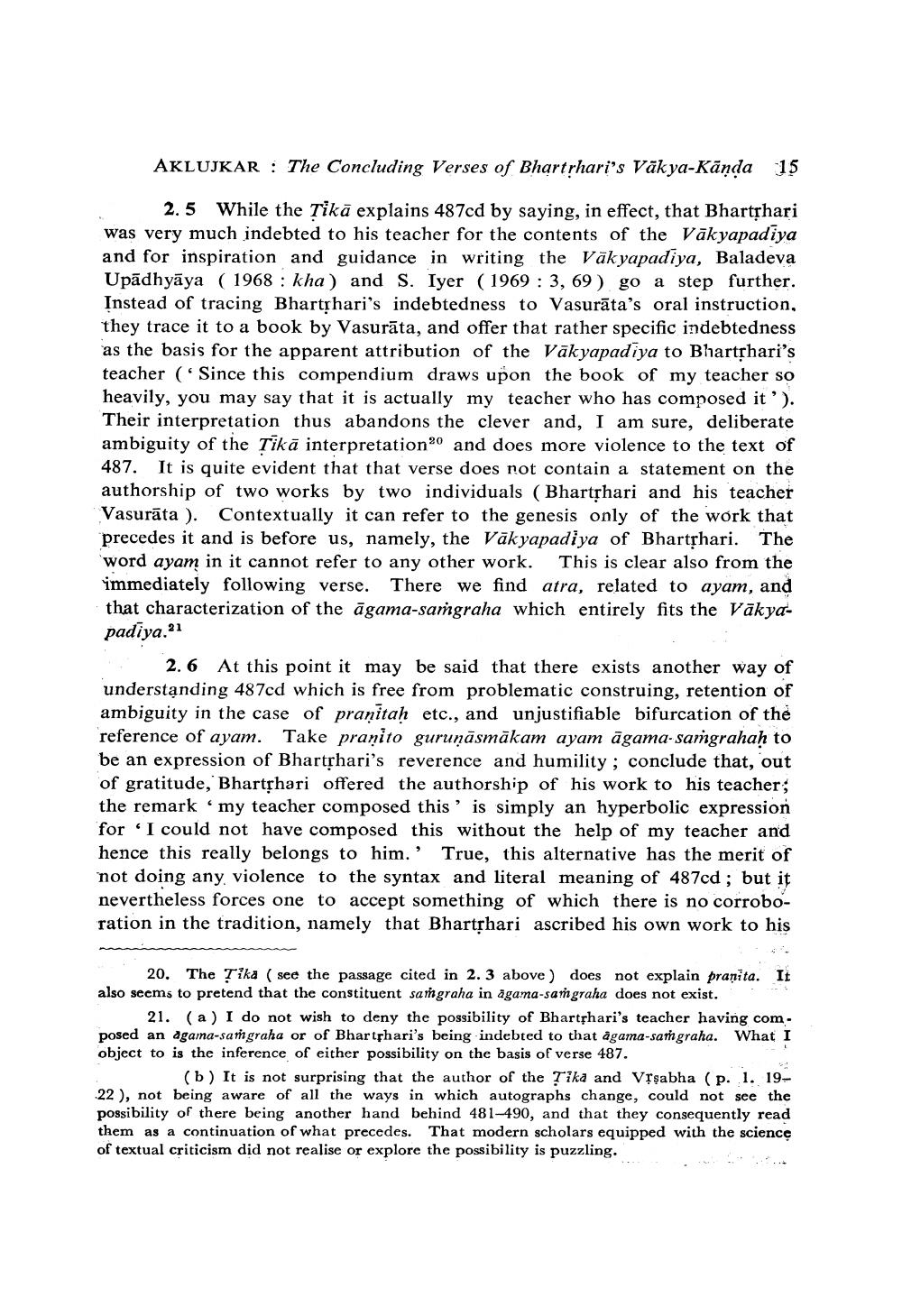Book Title: Concluding Verses Of Bhartrharis Vakya Kanda Author(s): Ashok Aklujkar Publisher: Ashok Aklujkar View full book textPage 7
________________ AKLUJKAR : The Concluding Verses of Bhartrhari's Vāk ya-Kānda 15 2.5 While the Tikā explains 487cd by saying, in effect, that Bhartphari was very much indebted to his teacher for the contents of the Vākyapadiya and for inspiration and guidance in writing the Vāk yapadiya, Baladeva Upādhyāya ( 1968 : kha) and S. Iyer (1969: 3, 69 ) go a step further. Instead of tracing Bharthari's indebtedness to Vasurāta's oral instruction, they trace it to a book by Vasurāta, and offer that rather specific indebtedness as the basis for the apparent attribution of the Vākyapadiya to Bhartshari's teacher (Since this compendium draws upon the book of my teacher so heavily, you may say that it is actually my teacher who has composed it'). Their interpretation thus abandons the clever and, I am sure, deliberate ambiguity of the Tikā interpretational and does more violence to the text of 487. It is quite evident that that verse does not contain a statement on the authorship of two works by two individuals (Bhartphari and his teacher Vasurāta ). Contextually it can refer to the genesis only of the work that precedes it and is before us, namely, the Vāk yapadiya of Bhartphari. The word ayam in it cannot refer to any other work. This is clear also from the immediately following verse. There we find atra, related to ayam, and that characterization of the āgama-samgraha which entirely fits the Vākyapadiya. 21 2.6 At this point it may be said that there exists another way of understanding 487cd which is free from problematic construing, retention of ambiguity in the case of pranitah etc., and unjustifiable bifurcation of the reference of ayam. Take pranito guruņāsmākam ayam āgama-samgrahah to be an expression of Bharthari's reverence and humility; conclude that, out of gratitude, Bhartphari offered the authorship of his work to his teacher; the remark my teacher composed this is simply an hyperbolic expression for I could not have composed this without the help of my teacher and hence this really belongs to him.' True, this alternative has the merit of not doing any violence to the syntax and literal meaning of 487cd ; but it nevertheless forces one to accept something of which there is no corroboration in the tradition, namely that Bhartshari ascribed his own work to his 20. The Tika see the passage cited in 2. 3 above) does not explain pranita. It also seems to pretend that the constituent samgraha in agama-samgraha does not exist. 21. (a) I do not wish to deny the possibility of Bhartphari's teacher having com. posed an agama-samgraha or of Bhartphari's being indebted to that agama-samgraha. What I object to is the inference of either possibility on the basis of verse 487. (b) It is not surprising that the author of the pika and Vrsabha (p. 1. 1922 ), not being aware of all the ways in which autographs change, could not see the possibility of there being another hand behind 481-490, and that they consequently read them as a continuation of what precedes. That modern scholars equipped with the science of textual criticism did not realise or explore the possibility is puzzling.Page Navigation
1 ... 5 6 7 8 9 10 11 12 13 14 15 16 17 18
